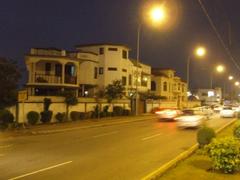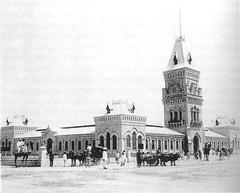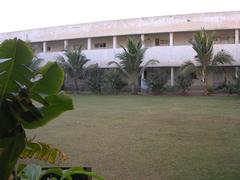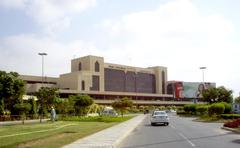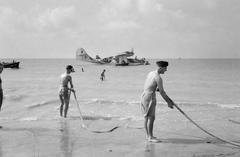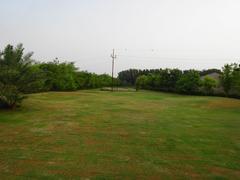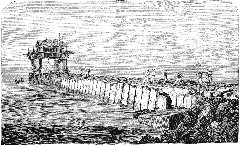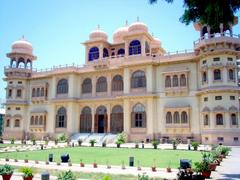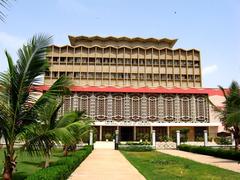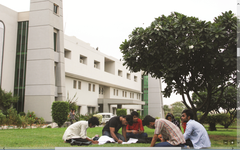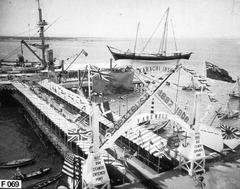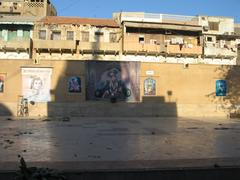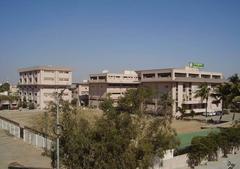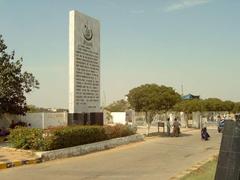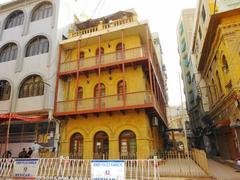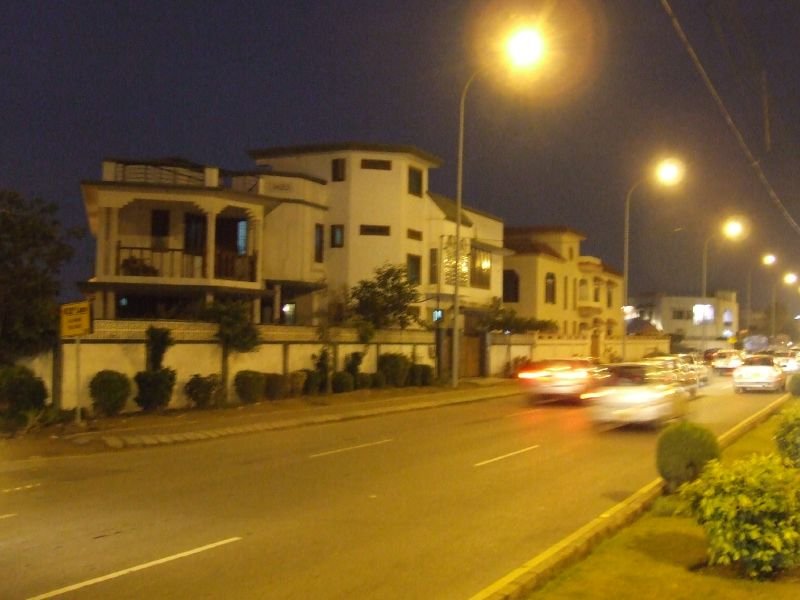
Clifton Cantonment Karachi: Visiting Hours, Tickets, and Historical Sites Guide
Date: 14/06/2025
Introduction
Clifton Cantonment, located in Karachi, Pakistan, is a vibrant blend of rich history, cultural diversity, and modern urban development. Established as a separate entity from Karachi Cantonment in 1980, Clifton has grown into a prestigious district marked by colonial-era architecture, upscale residences, bustling commercial sectors, and a diverse population. Its proximity to the Arabian Sea provides both scenic beauty and a dynamic urban landscape, making it a compelling destination for history enthusiasts, cultural explorers, and leisure travelers alike (cbc.gov.pk).
This comprehensive guide covers the key aspects of visiting Clifton Cantonment, including historical background, cultural significance, visitor information, accessibility, travel tips, and recommendations for exploring notable sites like Mohatta Palace, Seaview Beach, and major religious landmarks.
Table of Contents
- Historical Background and Urban Development
- Cultural and Historical Significance
- Visitor Information
- Cultural and Religious Heritage
- Practical Visitor Tips
- Frequently Asked Questions (FAQs)
- Maps and Visual Media
- Urban Identity and Contemporary Trends
- Summary and Final Tips
- References
Historical Background and Urban Development
Colonial Origins and Early Development
Clifton Cantonment was initially part of the larger Karachi Cantonment, established by the British for military and administrative purposes. Its coastal position along the Arabian Sea made it a strategic and desirable area. On August 9, 1980, Clifton was designated as an independent administrative unit to better manage the growing southern suburbs, including the Defence Housing Authority (DHA) and historic Clifton (cbc.gov.pk).
Expansion and Urban Planning
Spanning over 12,665 acres (about 51.3 sq km), Clifton’s population has surged from approximately 182,489 in 1998 to an estimated 550,000. The area encompasses:
- Eight phases of DHA
- Blocks 8 and 9 of KDA Scheme-5
- Seven informal settlements (katchi abadis), such as Punjab Colony and Dehli Colony (cbc.gov.pk)
Its urban fabric is a mix of carefully planned residential zones, commercial centers, recreational spaces, and high-rise developments, with a focus on cleanliness and self-sustained governance.
Infrastructure and Civic Development
Key infrastructure highlights:
- Road Network: 361.54 km
- Sewerage System: 449.76 km
- Water Supply: Over 70,000 connections
- Taxable Units: Approximately 72,000 properties (cbc.gov.pk)
Major roads like Ch. Khaliq-uz-Zaman Road and Abdul Sattar Edhi Avenue improve connectivity, supporting both residents and visitors.
Socio-Economic Transformation
Clifton is recognized for its affluent communities, embassies, and expatriate residents. The development of DHA phases has attracted upper-middle and upper-class families, increasing property values and introducing premium amenities (karachiurbanlab.com). However, the presence of informal settlements highlights the area’s socioeconomic contrasts and ongoing urban challenges.
Environmental and Urban Challenges
Rapid urbanization has resulted in issues such as disrupted drainage and flooding due to land reclamation, which also impacts local mangrove ecosystems. Anti-encroachment drives by the Cantonment Board aim to reclaim public land, sometimes creating tension with informal communities (tribune.com.pk).
Governance and Administrative Structure
Clifton is managed by the Cantonment Board Clifton (CBC), which operates independently from Karachi’s main municipal government. The CBC oversees service delivery, infrastructure, and public amenities. However, overlapping jurisdictions, especially with DHA, can complicate administration (karachiurbanlab.com).
Cultural and Historical Significance
Clifton boasts several of Karachi’s most significant historical and cultural landmarks:
- Mohatta Palace Museum: Built in 1927, this Indo-Saracenic building hosts art and cultural exhibitions (trip101.com).
- Seaview Beach: A popular, accessible stretch of coastline ideal for recreation and photography (cbc.gov.pk).
- Masjid-e-Tooba: World’s largest pillarless dome, renowned for its architectural elegance (heypakistani.com).
- Shrine of Abdullah Shah Ghazi: A key spiritual site and symbol of interfaith harmony (dailytimes.com.pk).
- Sri Ratneswar Mahadev Temple: Active Hindu temple reflecting the district’s religious diversity (dailytimes.com.pk).
Visitor Information
Visiting Hours
- Mohatta Palace: Tuesday–Sunday, 10:00 AM – 6:00 PM; closed Mondays and public holidays (mohattapalace.org.pk).
- Seaview Beach: Open year-round, all day.
- Religious Sites: Vary by location but generally open from early morning to evening; see specific sites below.
Tickets
- Mohatta Palace: PKR 200 for locals, PKR 500 for foreigners, PKR 100 for children under 12.
- Public Parks & Beaches: Free entry.
- Special Exhibitions/Events: Fees may vary; check official sources.
Accessibility
- Easily accessible via major roads; ride-hailing apps like Careem and Uber are widely used.
- Most major sites offer parking and are wheelchair accessible, though some older buildings may have limited accessibility.
Guided Tours
- Guided tours are available for Mohatta Palace and can be arranged for other sites through local tour operators or hotel concierges. English and Urdu-speaking guides are offered at most major attractions.
Special Events
- Mohatta Palace and religious sites host cultural festivals, art exhibitions, and spiritual gatherings, especially during national holidays and religious festivals. Check official websites for schedules.
Cultural and Religious Heritage
Islamic Heritage: Mosques
- Masjid-e-Tooba (Gol Masjid): 7:00 AM – 8:00 PM; free entry; famed for its immense pillarless dome (heypakistani.com).
- Mohatta Mosque: 8:00 AM – 6:00 PM; free entry; notable for Mughal-Sindhi fusion architecture (heypakistani.com).
Sufi and Interfaith Sites
- Shrine of Abdullah Shah Ghazi: Open 24 hours; free; especially busy during Urs festival (dailytimes.com.pk).
- Sri Ratneswar Mahadev Temple: 6:00 AM – 8:00 PM; free; active during Maha Shivratri (dailytimes.com.pk).
- Other Sites: Shri Swaminarayan Mandir, Gurdwara Nanak Sahib, and Parsi Dar-e-Mehr also reflect the area’s religious diversity (tripjive.com).
Cultural Institutions and Heritage Sites
- Jehangir Kothari Parade and Bagh Ibn-e-Qasim: Open dawn to dusk; free entry; offers green spaces and historical promenade (jbms.pk).
Festivals and Traditions
- Islamic: Eid-ul-Fitr, Eid-ul-Adha, Urs of Abdullah Shah Ghazi.
- Hindu: Diwali, Maha Shivratri.
- Parsi: Navroz at Dar-e-Mehr.
- These celebrations foster community spirit and interfaith harmony.
Practical Visitor Tips
- Dress Modestly: Especially at religious sites; cover shoulders and knees (jbms.pk).
- Best Visiting Season: October to March for pleasant weather.
- Safety: The area is generally safe, but standard precautions apply. Use ride-hailing apps and avoid isolated areas after dark.
- Photography: Allowed in most public areas; check specific site rules, especially at religious locations.
- Facilities: Most major attractions offer restrooms, cafes, and souvenir shops.
Frequently Asked Questions (FAQs)
Q: What are the visiting hours for Mohatta Palace and Seaview Beach?
A: Mohatta Palace is open Tuesday to Sunday, 10:00 AM – 6:00 PM. Seaview Beach is accessible at all hours.
Q: Is there an entry fee to the main landmarks?
A: Public beaches and parks are free. Mohatta Palace charges nominal fees.
Q: Are guided tours available?
A: Yes, at Mohatta Palace and through various tour operators for other sites.
Q: How do I get to Clifton Cantonment?
A: Use main roads or ride-hailing services for ease and safety.
Q: Is Clifton Cantonment safe for solo travelers?
A: Yes, but standard travel precautions are advised.
Maps and Visual Media
Use interactive maps for navigation. High-resolution images and virtual tours for Mohatta Palace and Clifton’s coastline are available on relevant official websites. Images are typically tagged for optimal search visibility, such as “Clifton Cantonment visiting hours,” “Karachi historical sites,” and “Mohatta Palace Museum Karachi.”
Urban Identity and Contemporary Trends
Clifton Cantonment is a microcosm of Karachi’s contrasts—luxurious housing societies alongside informal settlements, historical preservation amid rapid modernization. Gentrification, property development, and urban planning efforts are reshaping the district, while community-driven initiatives and public-private partnerships aim to preserve its unique urban identity (karachiurbanlab.com).
Summary and Final Tips
Clifton Cantonment stands at the intersection of history, culture, and urban vitality. Whether you’re marveling at the architecture of Mohatta Palace, enjoying the ambiance of Seaview Beach, or exploring the district’s religious landmarks, Clifton offers a multifaceted experience. Understanding visiting hours, ticketing, and transportation options ensures a smooth trip. Guided tours, local festivals, and nearby attractions like Dolmen Mall and Jehangir Kothari Parade can further enrich your visit.
Plan your trip with this guide, respect local customs, and immerse yourself in the dynamic spirit of Karachi’s Clifton Cantonment. For up-to-date information and travel tips, explore official resources and consider using mobile apps like Audiala for enhanced visitor experience.
References
- Clifton Cantonment Board (CBC) - Official Website
- Karachi Urban Lab - Urban Studies on Clifton Cantonment
- Trip101 - Historical Places in Karachi
- Daily Times - Cantonment Board Clifton Overview
- Mohatta Palace - Official Website
- Hey Pakistani - Best Mosques in Karachi
- Tribune Pakistan - Anti-Encroachment Drive in Karachi
- The Wandering Quinn - Places to Visit in Karachi
- JBMS - Best Places to Visit in Karachi
- Tripjive - Unique Religious Sites in Karachi
- Mohatta Palace - Wikipedia
- Karachi Tourism Board
- Rising Pakistan - Clifton Beach and Attractions
